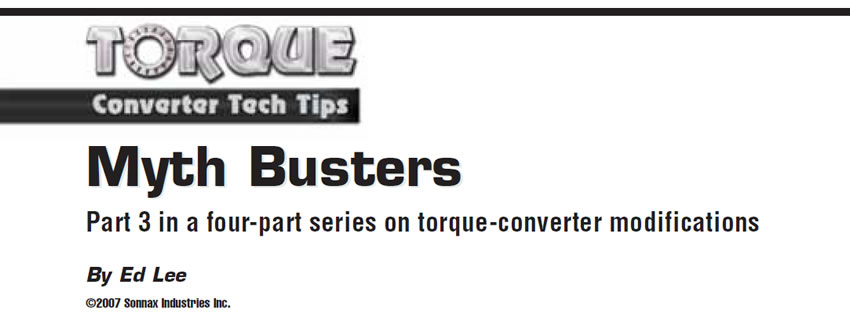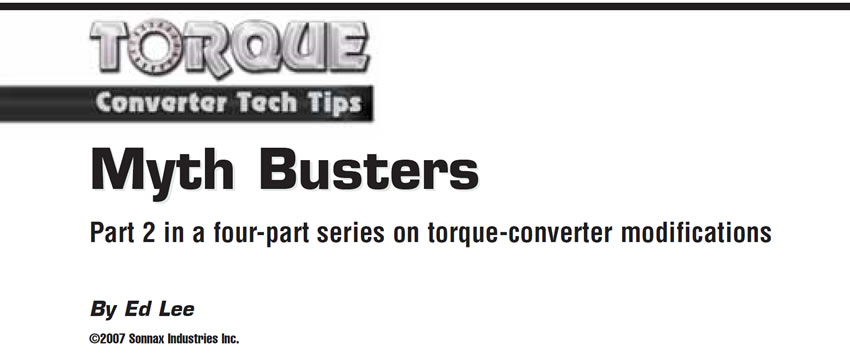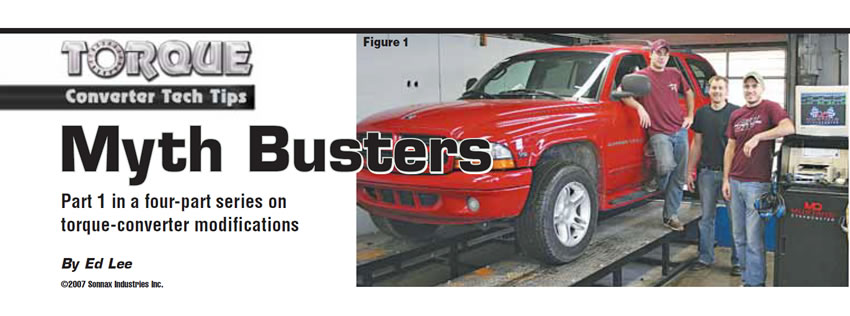Myth Busters
In the past three articles we looked at the evaluation of torque-converter modifications on a chassis dyno. The modified converters were compared with an OEM converter, and the testing was done by instructor Sean Boyle and three of his students at Southern Illinois University. An MD-250 Mustang Chassis Dyno was used for the evaluations, and a Dodge Durango RT, equipped with a stock 5.9-liter gas engine and 46RE transmission, was used as the test vehicle. All the converters were subjected to wide-open-throttle (WOT) horsepower tests. The vehicle was locked in third gear (direct drive) and TCC lockup was inhibited.

Myth Busters
In parts 1 and 2 we looked at the results of chassis-dyno testing conducted on torque-converter modifications by Sean Boyle’s students in the automatic-transmission course at Southern Illinois University. The testing was done on an MD-250 Mustang chassis dyno, and the test vehicle was a stock 2000 Dodge Durango RT equipped with a 5.9-liter gas engine and a 46RE transmission.

A Quick Fix for an Earlier Fix
Do you recall that feeling you get when you first figure out that the transmission on your bench has been worked on before? The signs could be obvious, like a painted case, but other times it’s not until you start tearing it down that you see clues that someone has been there before you. For me it is always a bit of a disappointment, because I know I have to watch carefully for changes that someone else made that could affect the transmission when I’m finished with it.

Myth Busters
Last month we reviewed the results of chassis dyno testing done by Sean Boyle’s students in the automatic-transmission class at Southern Illinois University. Four modified torque converters were evaluated. The testing was done on an MD-250 Mustang Chassis Dyno, and the test vehicle was a stock 2000 Dodge Durango RT equipped with a 5.9-liter gas engine and a 46RE transmission.

Myth Busters
When the vehicle manufacturers create their driveline packages, they have many issues to consider, such as fuel economy, performance and durability. In the torque-converter-rebuilding industry, many companies will make modifications to enhance the OEM torque converter for a specific vehicle combination. Some modifications are done to create better acceleration and others are done to improve towing capabilities and fuel economy.

